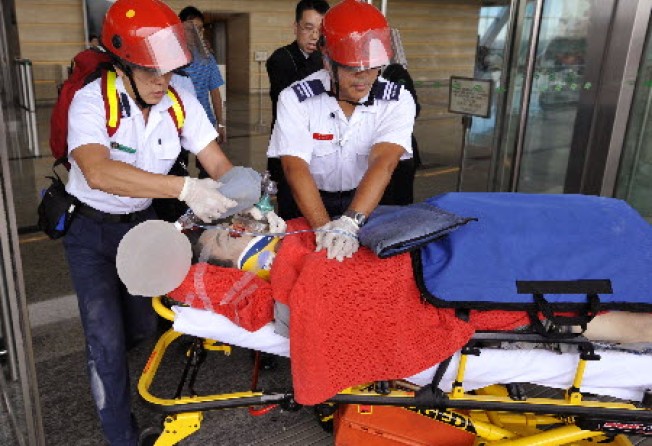Deciding the time to let a patient die peacefully
Hospitals have strict guidelines on when to forgo life-sustaining treatment

When patients with irreversible illnesses reach the terminal stage, life-sustaining treatment can still be provided thanks to modern medical technology.
Mechanical ventilation and cardiopulmonary resuscitation (CPR) are good examples. But these interventions only prolong the dying process - and they may actually cause more suffering.
In that situation, the patient, their relatives and the clinical team can discuss whether to forgo such treatment in order to let the patient die peacefully.
We must clarify that forgoing life-sustaining treatment when appropriate is not euthanasia. Euthanasia is defined as "direct and intentional killing of a patient", which is illegal in most parts of the world.
So when can one forgo life-sustaining treatment?
First, the decision of an able and properly informed patient to forgo life-sustaining treatment must be respected.
Second, if that person is not able to make the decision but has issued a valid directive previously that they wish to refuse life-sustaining treatment, then this must also be respected.
And third, if neither of these apply, the clinical team should reach a consensus with the family about whether the treatment is in the patient's best interests or not.
A key elective decision regarding this treatment is whether CPR should be given when the patient goes into cardiac arrest. Since this is a complex decision, professional guidelines are needed.
The Hospital Authority in 1998 issued a set of internal guidelines on CPR. Since then, most terminally ill patients in public hospitals have been able to die peacefully without undergoing futile CPR.
But the guidelines applied only to inpatients, and with more terminally ill patients being cared for in their own homes, or in long-stay care homes, there was a need to extend the guidelines. The authority did so this year so that they now include patients who are not in hospital. It also refined guidelines on inpatient practice.
When a patient being cared for in their home, or in a long-term care home, is admitted to hospital because their condition has deteriorated, a different clinical team will get involved. So the decision-making and communication processes need additional safeguards.
First, under the guidelines, there is a standard "Do not attempt CPR" form for patients not in hospital. It has to be signed by two doctors. The patient must have either a valid advance directive, or if the patient is a minor or unable to make the decision and doesn't have the advance directive, the decision must be made after discussion with family members. The form can only be used for patients in the advanced stage of an irreversible illness, and it must be regularly reviewed.
Second, the form is not an instruction to the receiving medical team. Accident and emergency department staff must assess whether the form is still valid. If there is any doubt, CPR should be given.
It must be emphasised that the decision to forgo life-sustaining treatment for the terminally ill does not mean giving up on the patient.
It is simply that the clinical team will not prolong the dying process pointlessly.
Treatment to ease the symptoms, care and concern must be provided, so that the patient can have a peaceful death.
Tse Chun-yan is chairman of the Hospital Authority's clinical ethics committee